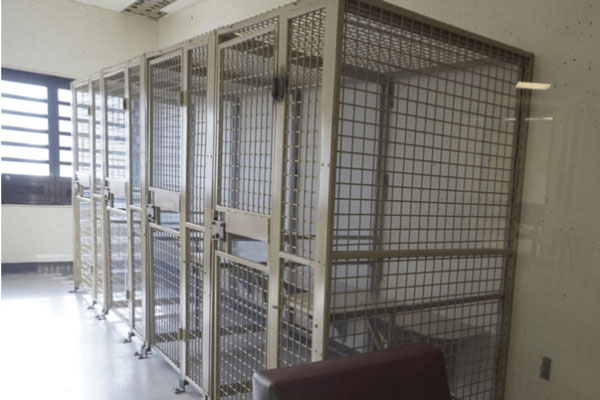Going, Going, Gone: Trends and Consequences of Eliminating State Psychiatric Beds

The number of last-resort psychiatric hospital beds that remain in state hospitals for patients whose treatment is not being, or cannot be, adequately addressed in a community setting has fallen to fewer than 12 beds per 100,000 population in the United States, the lowest level on record. This shortage has set off a domino effect of unmet demand that is reflected in such consequences as individuals in psychiatric crisis being boarded for days and even weeks in hospital emergency departments while they wait for hospital admission. It has also resulted in inmates in psychiatric crisis being waitlisted for weeks and months in jails and prisons as they wait for admission to forensic beds.
Going, Going, Gone: Trends and Consequences of Eliminating State Psychiatric Beds reports the findings of a 2016 survey by the Office of Research and Public Affairs to determine how many state hospital beds remain staffed and in service in the United States, by state; what percentage of state hospital beds were allocated to serving individuals in the criminal justice system in 2016; and how long pre-trial jail detainees were waiting for beds in a sample of 25 states. The report represents the fourth census of state hospital beds Treatment Advocacy Center has published in the last decade.
Top Takeaway
In the first half of 2016, 37,679 staffed psychiatric beds remained in state hospitals, where individuals who are considered unsuccessfully treated and or too dangerous for other health care settings receive inpatient care. At 11.7 beds per 100,000 population, this represented a 17% drop from 2010 bed numbers and left fewer state hospital beds per capita in the United States than at any time since before the nation stopped treating mental illness as a crime in the 1850s.
Fast Facts
- Nearly 50% of the few state hospital beds remaining in service by 2016 (about 5.5 of the 11.7 per 100,000 people) were occupied by forensic patients charged with or convicted of crimes, a population that has been exploding in many states.
- Despite a shift in state hospital budgets from civil to forensic treatment, most states maintain wait lists for their forensic beds, and some lists are months long. Many states are being sued or threatened for civil rights violations over such waits.
- A growing number of states are resorting to hospital beds in corrections facilities (“beds behind bars”) for criminal offenders because the number of available beds in the state mental health systems is inadequate to meet demand.
Recommendations
- Determine how many psychiatric beds are necessary to meet inpatient need and set supply targets
- Identify and reform public policies that incentivize bed shortages
- Improve data collection associated with bed shortages and build public policy on the evidence
- Increase the use of diversion strategies that reduce hospitalization rate
Since the Study
The Substance Abuse and Mental Health Services Administration (SAMHSA) for the first time has established a serious mental illness
portfolio of research and statistics specific to the most disabling psychiatric diseases. The high rate of criminal justice involvement by individuals with conditions such as schizophrenia and bipolar disorder exerts significant demand on state hospitals and is among the topic areas proposed for SAMHSA study.
Treatment Advocacy Center collaborated with the Gillings School of Global Public Health at the University of North Carolina to develop a novel mathematical approach to projecting the impact of increasing bed numbers or making other changes in mental health practices on the forensic bed waits. See the findings at Emptying the New Asylums.